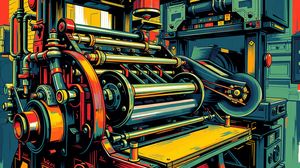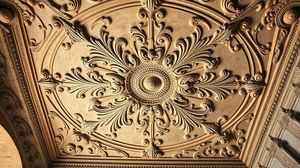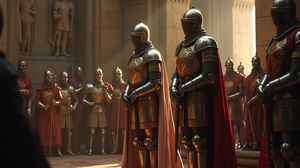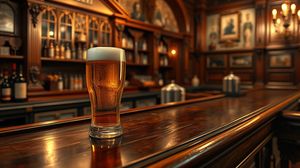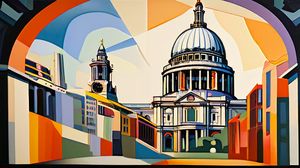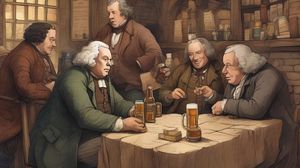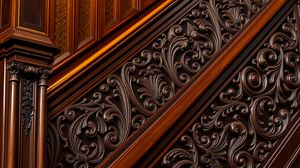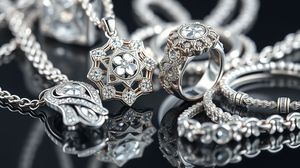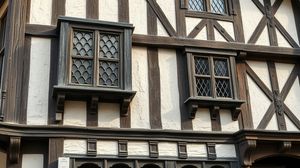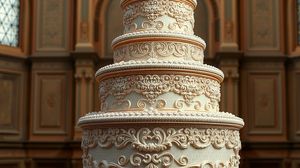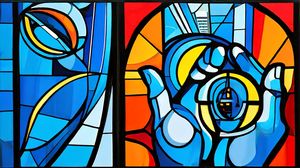
St. Dunstan-in-the-West is an intriguing church located in the bustling area of Fleet Street, London. The church's history stretches back to its original foundation in the 12th century, making it one of the city's treasures with deep historical roots. Its architecture is a fascinating blend of English Gothic and Regency styles, a result of its various reconstructions over the centuries.
One of the most captivating features of St. Dunstan-in-the-West is its tall clock tower, which houses one of the earliest public clock faces in London. Remarkably, it features a unique dual mechanism that allows two figures of giants to strike the bells, a rare and charming spectacle that has been delighting visitors since 1671.
Within the church, visitors can discover an exquisite relief by the famous artist Sir Jacob Epstein. This piece, known as "Madonna and Child," is one of the few religious sculptures by Epstein on public display, offering a glimpse into the blend of sacred art and modern sensibilities.
The interior of St. Dunstan-in-the-West holds a unique aspect of religious convergence, as it serves as a place of worship not only for the Church of England but also for the Romanian Orthodox Church. This duality is a testament to its openness and inclusivity, reflecting the multicultural ethos of contemporary London.
Among the church's interesting oddities is the statue of Queen Elizabeth I, notable for being the only such figure of her carved during her lifetime. Positioned in the east wall, it originally adorned the Ludgate in London and has been preserved here as a historical heirloom.
Beyond its religious significance, St. Dunstan-in-the-West has been associated with several historical figures, including the renowned diarist Samuel Pepys. As a regular visitor, Pepys has mentioned the church in his writings, linking it to the vibrant life of London in the 17th century.
This church not only provides a serene space for reflection amidst the hustle of London but also presents a unique array of historical and artistic features that make it a compelling destination for history enthusiasts and casual visitors alike.

Making the Most of Your Visit:
Step into the peaceful courtyard before entering the church. It's often quieter here, letting you soak in the tranquil atmosphere and get a feel for the history surrounding you before you dive into the intriguing interiors.
Take a moment to study the intricacy of the clock and its unique strikers. If you're there when it chimes, you're in for a special treat, as those giants don't just act the part—they really do strike the bells!
Inside, don't miss the "Madonna and Child" by Jacob Epstein. It's quite a striking piece, and if you're familiar with Epstein's work, it's fascinating to see how he adapted his art to a religious context. Take your time to appreciate the blend of modern art with traditional setting.
Keep an eye out for the Tudor-era statue of Queen Elizabeth I. It's one of those rare treats to see such a historical figure depicted in something created during their lifetime. It really ties you back to the rich history St. Dunstan-in-the-West is steeped in.
As you wander through, consider the church's dual role as both an Anglican and Romanian Orthodox place of worship. It highlights an often-overlooked aspect of London's diversity and community spirit. Reflect on how this convergence of faith traditions might influence or enhance your experience of this place.

Visiting Times & Costs:
St. Dunstan-in-the-West is open to the public, though visiting hours can vary. Generally, the church is open on weekdays during daytime hours, but it's advisable to check specific times before planning your visit.
Entry to the church is free, allowing visitors to explore its historical and artistic features without charge. However, donations are appreciated to help with the maintenance and preservation of the church.
Regarding accessibility, the church has some limitations. Access for wheelchair users may be restricted due to steps and narrow entrances in certain areas. It is recommended to contact the church in advance to discuss specific accessibility needs and to ensure a smooth visit.

Address & Map:

Nearby:
